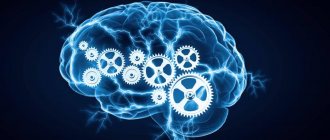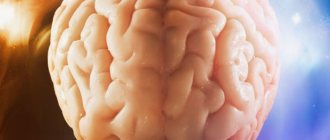How to learn to read faster
People who want to become professionals in their field must work through a huge amount of information. In addition, there are so many interesting books in the world, and I would like to read everything, but I am sorely short of time. There is a way out - learn to read quickly. And this is possible: Napoleon Bonaparte, Honore de Balzac, Albert Einstein, John Kennedy, Maxim Gorky and others read quickly, up to 2 thousand words per minute. For example, Napoleon read one rather voluminous book every morning before breakfast, managing to mark important things in its margins. thoughts for him.
And former American President Theodore Roosevelt, who reads at incredible speed, developed his own method of speed reading, which is now successfully used by those who want to learn it.
It could be argued that reading quickly reduces reading comprehension and retention. But practice shows that the opposite is true: with normal reading, approximately half of the information is absorbed, while with speed reading, 70-80%.
Why does this happen? Because fast reading requires more concentration than normal reading, during which we read less carefully. We have parallel thoughts: we think about current affairs, for example, that it’s time to turn off the refrigerator, about the upcoming vacation, or our thoughts return to past events. It is not surprising that reading progress is slow, and new information is poorly remembered.
You can master speed reading methods at special trainings: 5 lessons of 3.5-4 hours are enough. Their advantage lies not only in the fact that the classes are taught by specialists, but also in the fact that, firstly, the person who paid for the training is unlikely to want to voluntarily skip classes. Secondly, teachers form pairs of students, making classes more effective. Thus, the one who risks missing class will let his partner down - the obligation to him will serve as an additional incentive not to shy away from classes.
You can learn to speed read on your own. To do this, you just need a great desire, faith in the result and daily training. And if many people have the desire, then with faith it will be more difficult. Let's remember how children learn to ride a bicycle: those who think they will fall actually fall; those who are sure that they will go straight away somehow miraculously keep their balance and go. We believe that we can do it!
As for training, we do special exercises every day for 30-40 minutes for 21 days. Psychologists believe that it takes so long to get rid of an old habit and instill a new one.
For exercises, you need to choose a convenient time and place so that nothing distracts you from reading. It is useless to do this, for example, in the subway, where it is impossible to concentrate.
Why do you need to read books quickly?
Speed reading is more than just reading quickly. The information read must be correctly understood and retained in memory. Needless to say, today we live in an age of information overload. Technologies change every day and for many it is necessary to keep abreast of the latest news and trends, and the question of how to learn to read quickly is relevant. There is a wealth of information everywhere we look—on TV, on the Internet, on magazine racks, bookshelves, in product brochures, on planes and trains, and so on. In schools, the amount of information that students need to learn and retain increases every year. While studying in college, a student is forced to spend up to 4 hours or more every day just reading.
Speed reading allows you to remain knowledgeable in competitive fields, and the bonus is additional benefits that impact various aspects of our lives:
- Memory training: The brain is like a muscle and if we train it constantly, it becomes stronger and works more efficiently. Speed reading, in a sense, challenges our brain to operate at a higher level. By training it to quickly perceive and understand information, other areas are also improved, namely our memory, which acts as a stabilizing muscle and is triggered when speed reading.
- Focus: Most people can read about 200-250 words per minute, which is an average reading speed, but this is not fast enough to absorb all the information offered in school, work and life in general. Some people can read up to 300-400 words per minute, although this is not enough in today's highly competitive and information-rich world. There are two main reasons why the gap exists: the traditional reading style may not be very effective and lack of attention. If we are not focused on what we are reading, our mind will be occupied with other thoughts, while speed reading helps to focus our attention.
- Improving logic: Reading is an exercise for the brain. By training it to speed read, it becomes more efficient at sorting information and connecting it to other parts stored in memory. The more reading speed improves, the faster this process occurs and logic automatically improves, as we get used to reacting faster to things that would previously have taken longer.
- Active Meditation: Reading is generally relaxing, helps reduce stress, clears our mind of worries and other thoughts. Having learned to read faster, we are more absorbed in the material: this forces us to focus only on the text we read, what is called active meditation. The meditative state achieved through the activity relieves stress and increases emotional well-being.
Every book or article, be it fiction or non-fiction, helps change our awareness and we begin to see greater depths in our lives, which in turn increases self-confidence.
Learning to speed read can teach us to stop saying words in our minds as we read (something called subvocalization, where we hear our own voice in our minds), and improve comprehension and focus on what we're reading.
Contact IQClub for help
IQClub will help develop reading skills, memory, and attention in a child. This is a new Internet service that will delight both children and parents. A team of professionals has prepared entertaining educational games for children. The best designers, psychologists and teachers worked on the development.
How to use the service?
- Register in the system (you can use social networks).
- Give your child an interesting test.
- After assessing your child's strengths and weaknesses, an individual educational program will be created for him.
Training results can be tracked online. This way you will quickly learn about your child’s achievements and receive the necessary recommendations for further development.
In the modern world, when we are surrounded by various electronic gadgets, the problem of children's reading is becoming increasingly urgent: unfortunately, fewer and fewer children are reading books lately. Therefore, adults should show by personal example that reading is actually a very exciting process. And besides, as F. Janlis said: “People who read books will always control those who watch TV.”
Speed reading - what is it?
Speed reading is the ability to increase reading speed using certain methods and tools. Speed reading techniques include chunking and minimizing subvocalization. There are many speed reading training programs available - books, videos, software, workshops.
Speed reading includes two main techniques:
- skimming;
- scanning.
Skimming, a tool that works better with factual material (non-fiction), refers to the search for general ideas. It introduces a visual search of sentences on a page to find clues to the main idea, this could mean reading the beginning and end of the text for summary information, and then, if necessary, the first sentence of each paragraph to quickly determine whether to look for even more detail, like this is determined by the questions or purpose of the reading.
Many people think that skimming is a random process where the eyes are directed somewhere, without certainty. But for effective browsing there must be a structure; what you read is more important than what you skip.
Scanning is a process aimed at retrieving information using a mind map formed from skimming (organizing information visually in a hierarchical manner that demonstrates the interrelationship of information for better retrieval ability). The scan includes the main point, headings, facts, or important pieces of information.
For scanning to be successful, we must understand how the material is structured and what we are reading so that we can find the specific information we need.
Speed reading is a skill honed by practice. In speed reading practice, this is done through several reading processes: preview, review, read, review and review; through reading and recall exercises (writing a short summary or mental outline).
Reminder about visual gymnastics
Of course, we must not forget about the schoolchild’s eye health!
Reading is very straining on the eyes, so I would like to advise you on visual gymnastics exercises.
1) At the beginning of the warm-up, you need to close your eyes and briefly, without pressure, massage your eyelids with your fingers.
2) Bring your eyes to the center (look at your nose), and then up (to the ceiling), repeat alternating actions.
3) Then roll your eyes in the directions indicated in the image, lowering/raising your eyelids.
4) Then the child should look at some close and distant objects, alternating actions.
5) At the end of the warm-up, you should massage your eyes in the same way as you did at the beginning.
The secret of great people
The right approach helps improve the reading speed at which a person fully understands what he reads. Schoolteacher and researcher Evelyn Wood was the first to teach speed-reading techniques, first at the University of Utah. In 1959, a technique on how to quickly learn to read was presented in Washington. “Dynamic reading” involves learning to read several words at once and understand them at a glance, as well as developing the ability to read words not only horizontally, but also vertically.
Wood had only a minute to read 2,700 words, sharing the characteristics of what she read on the page; not from left to right, not individual words, but by reading groups of words or complete thoughts, avoiding involuntary rereading of the material. While developing programs, she eventually established a methodology of using a finger or pointer to help track lines of text while eliminating vocalization. Among those who studied Wood's speed reading skills was American President John F. Kennedy, an avid reader. Subsequently, many White House employees in the Kennedy, Ford, and Carter administrations took Evelyn Wood's speed reading program.
The method of speed reading discovered by Evelyn Wood is known as meta-guiding. The technique involves using a visual guide or pointer to enhance focus and aid eye movement. It effectively guides our eyes to where we are in the text and helps increase our reading speed. The simplest pointer is a finger, with which we can trace the words that we read. Meta-orientation is said to reduce subvocalization, thereby speeding up reading. Meta-guide forms can be a pen, pencil, or piece of paper that guides the vision, covers words that have already been read, to reduce distraction and eliminate rereading.
Howard Steven Berg has been named the world's fastest reader, thanks to the advanced accelerated learning methods he developed that turn information overload into information assets. He was included in the 1990 Guinness Book of World Records for reading at a speed of 25,000 words per minute and writing more than 100 words per minute.
Those who can read 10,000 words per minute while maintaining comprehension and retention are considered autistic, like Kim Peek, the autistic savant who inspired Dustin Hoffman's character in Rain Man.
A method for reading comprehension is the SQRRR or SQ3R process, introduced by American educational scientist Francis P. Robinson in his 1946 book Effective Research. The five stages are survey, question, read, recite, and review. It offers an effective and active approach to reading educational material. Created for students and used all over the world by students to better understand and remember what they read.
What is the main idea of the text?
You don't have to understand every word to understand what a text is about. In fact, it is enough to highlight key words, and based on them, the brain will independently complete the full picture of the story.
To do this, it is useful to perform the following exercise:
- Take any unfamiliar text.
- Ask someone to color in some random words with a marker.
- Read and try to understand the meaning of the text.
To begin with, you can take a simple text, but later practice on an article whose topic is completely unknown to you. The number of shaded words can also be increased.
After doing this exercise, you will understand that many words in the text are just water, which do not in any way affect our brain’s ability to select and assimilate the necessary information.
What slows down reading?
Reading types greatly influence reading speed. Most people, having learned to read word by word as children, never thought about improving this method. But for some of us, reading is an inevitable part of life, and learning to speed read means helping in many ways, the main thing is to cope with tasks easily. Of course, it's important to do it right.
When reading, most people look at a word or group of words and say what they read in their minds before moving on to the next word until they come to the end of a sentence or paragraph.
It is important to talk about fixation, which in itself is not a habit, but something that our eyes do naturally. But when done incorrectly, fixation results in ineffective reading. It sounds a little strange, but first you need to understand what fixation is.
Before any images appear in the mind, the eyes stop moving. Fixation basically means this ability of the eyes. The size of what we are looking at does not matter, nor does it matter how close or far it is. Without this feature, everything we looked at would seem like one big blur.
The same principle applies to the words we read. In order for the eyes to see the words we are trying to read, they must stop frequently on the words in each sentence. Fixations, also called eye stops, occur countless times a day. And most of the time we don't even realize it's happening. Other things that work along with fixations are known as saccades. These are rapid, intermittent movements of the eyes where they stop and then change focus as they “jump” from one point to another. When the eyes stop or fixate on a word, a short pause gives the brain an opportunity to understand the words.
When reading phonetically, our eyes stop or focus on almost every word we read, and then take time to decipher each one before moving on to the next.
Mental recitation
Mental reading or quiet speech (subvocalization) - pronouncing each word in your mind. The slowest form of reading. But subvocalization is a natural process in reading that helps the mind access meanings to understand and remember what is read, potentially reducing cognitive load. Mental enunciation is characterized by minor movements of the larynx and other muscles involved in the articulation of speech.
Those who move their lips while reading do what is called "sounding out" the words as they read them. There are also more sophisticated readers with subvocalization, they “hear” words in their minds as they read. What they hear is like a whisper that continues as the eyes continue to read.
The reason why people mentally recite what they read takes them back to childhood, to the days when they were just learning to read in elementary school, phonetically, dividing the word into syllables.
The act of saying or listening to words as we read is a good way to reassure ourselves that we are sounding correctly. But subvocalization works well for a toddler who is learning to read, not for an adult, he does not need to use his brain, eyes, ears and mouth to read. The eyes and brain are quite capable of reading and understanding everything on their own.
Regressive reading
Regression, rereading, returning to what has already been read - all this means the same thing. Regression is a process of moving backwards, although it is sometimes difficult to avoid when reading is academic or technical in nature. But most often, when people read, they regress out of habit. This type of regressive reading is called unconscious regression and usually occurs because our brains did not process the information correctly the first time for some reason.
Regression on a conscious level means we know we didn't understand what we were reading or missed something really important in what we read. Therefore, we are forced to return to what we read in search of the missing meaning.
Sometimes regression is caused by subvocalization. When we mentally pronounce words, our eyes and organs of articulation do not always progress at the same speed, that is, the eyes “run” ahead of the larynx.
For some people, having to reread is no different than having to check multiple times to see if they've turned off the oven. In this situation, regression represents a form of compulsive behavior.
Limited peripheral vision
Peripheral vision is an ability that involves perceiving what is happening on either side of us, above or below, beyond your macular vision. To improve this aspect of our vision, we can look at a busy scene (perhaps on a TV or computer screen) with our head turned to one side (practice turning left and right).
In the context of speed reading - taking more than one word at a time, reading a group of 4-16 adjacent words at one glance. Peripheral vision allows us to read with fewer eye fixations because our horizons expand and we can see, read, and process more words at once. Instead of reading word for word, we can skip ahead a few words and read in groups. Here's an example: We should focus on the word or words in the center of the sentence and rely on our peripheral vision to perceive the words on either side of the page.
What are the general recommendations?
- It is useful to read at different paces: sometimes quickly, sometimes slowly (the main thing is clearly).
- Try to read with extraneous sounds (this will teach you to concentrate).
- Practice reading “through the grid” (to develop the ability to guess the meaning, in this case there is no need to read the word to the end - anticipation).
- Alternate familiar/unfamiliar text (after reading a familiar text several times, the reading speed increases and is transferred, in part, to the unfamiliar text).
- Develop visual memory.
Exercises to develop speed reading skills
When speed reading, readers use methods that include searching for keywords that contain the essence of what is written.
Reading with a pointer
The simple method that every child uses to learn to read is great for adults to improve their reading speed. However, the trick is not only to point it out, but to do it quickly. The finger acts as a bloodhound for the eyes, which not only helps you stay focused, but also sets the pace for your reading. Try to increase your reading speed each time.
Eliminating articulation
Every child, when learning to read at the age of five, whispers words or pronounces them quietly. At the next level, when he is perhaps seven, despite the fact that he reads to himself, he still moves his lips (as if he were saying every word out loud). As adults, we pronounce words in our heads, but subvocalization prevents us from reading faster. But in order to master quick reading, how can you learn to drown out this voice inside? Listening to music while reading helps. This affects your understanding and you will soon notice that your concentration increases. Paradoxically, music, which previously interfered, will help you concentrate and learn speed reading faster.
Green dot method
The practice of contemplating the “green dot” offers many positive effects: stability of attention, enhanced visual perception, expanded field of vision, improved concentration, helping to focus on the main thing. The exercise, which trains attention and peripheral vision, is based on autogenic immersion and requires a special attitude, as well as time to master it.
- At the first stage, for two weeks, concentration is honed. Having drawn a green dot in the center of the text, we focus our attention on it for about ten minutes. The exercise is performed before going to bed and, closing your eyes, we continue to imagine the “green dot”. It is difficult to maintain attention without being distracted, but it is very important to make every effort, ignoring side irritants. At the same time, you should not overstrain your eyesight during the exercise.
- After two weeks, we begin training peripheral vision, that is, without moving our eyes, we look at the text horizontally and vertically, trying to cover (not read) the maximum number of words.
- The exercise is combined with Schulte tables, with randomly distributed numbers or letters. Typically a 5x5 table is used, although options with different sizes, colored columns and values are possible. Concentrating on the center of the table, we find all the numbers (letters) with peripheral vision.
Learning to guess
Keywords can be scattered throughout a paragraph, so they create a pattern of scattering that conveys the meaning of the text to the reader. The eye span on average covers 3-5 words, both horizontally and vertically. As soon as the eye sees a word, the brain begins the process of understanding. Our brains have the ability to fill in details, and that's what speed reading can teach - highlighting the important parts, allowing the mind to fill in the gaps for complete understanding.
Training gibberish
Gibberish is based on reading palindromic collocations and phrases; by degree of complexity - from letters to words. Then you can start reading from right to left using special books that can be found in electronic libraries.
Reading upside down
A feature of the experience of reading upside down text is that factors related to perception are changed or acquired. Before training, inverted reading is characterized by long reading times and low words per minute, with eye movements exhibiting greater fixation and regressive saccades. But training partially or completely reverses these effects, with better results typically achieved when reading aloud.
The "tick-tock" method
First, skim the text and look for important points. Catch headings and subheadings; read the first and last paragraphs of several chapters; get used to the writer's style. Learn to identify main ideas after speed reading, skipping unimportant information.
It is impossible to remember everything, even if you become a perfect speed reader, so learn to extract what suits your needs.
Reading Diagonally
The zigzag speed reading technique represents scanning the text, that is, not seeing every word, but skimming the text and selecting the main ideas. Using a finger or pen, we slide across the text diagonally, from left to right, crossing two or three sentences, then “slide” to the next two or three sentences, from right to left. This method is not recommended for materials that require very careful reading.
Word like picture
Photoreading is an advanced level in the evolution of speed reading and represents an entire system. The idea is to put ourselves in an altered state, using principles similar to meditation (quiet the mind, concentrate, change visual focus), where we can only perceive information by looking at a page for 1-2 seconds, not minutes.
Eliminating inner speech
It was previously mentioned that internal articulation is one of the main reasons for low reading speed. There are methods to combat it:
- Count to yourself from ten to one. Try to understand a text without losing count.
- Do the same thing, but instead of counting, hum a song you know by heart.
- Tap any rhythm while reading.
The principle of this exercise is to “engage your inner speaker” and learn to perceive the text without its participation.
Interesting exercises for developing technique
Not knowing the meaning of a word slows down reading. The wider our vocabulary, the less time we need to stop and look up the meanings of unknown words. Therefore, in your free time, it’s a good idea to learn new and unfamiliar words, which will improve not only your speed reading skills, but also your general intelligence.
When reading each page or several paragraphs, take a short pause during which you remember everything you read. Write a few key words in the margins - this will help with understanding the material.
Preparation
For our experiment you will need:
- a book of at least 200 pages;
- pen or pencil;
- timer.
The book should lie in front of you without closing (press down the pages if it tries to close without support).
Find a book that you don't have to hold so it doesn't close.
You will need at least 20 minutes for one exercise session. Make sure that no one distracts you during this time.
At what age can children be taught speed reading?
How to quickly teach your child to read? Perhaps a cautious parent will decide that speed reading is secondary to teaching the basics of reading. But the problem is that most children never go beyond basic reading skills, what is taught at school, not at home, and early get used to factors such as subvocalization and regression, evolving with them into adulthood. That's why it's important to teach good reading skills from the beginning, offering children the tools and know-how to speed read without sacrificing comprehension.
At what age should you start teaching your child speed reading? The answer depends on the child's mental age (not chronological), but the following is generally recommended. Once children have mastered basic reading skills (i.e., have learned to read age-appropriate materials), they will benefit from learning a variety of reading/thinking skills: cause-and-effect, inference, getting the message or moral of a text, building vocabulary, working with the unfamiliar vocabulary and how to learn to read aloud quickly, and different approaches to reading. It is good for a child to learn to read for pleasure, even alone, because it helps to gather information about how language works and to gain independent experience for speed reading skills.
Method 2. Developing peripheral vision
Your main tool (or one of) in speed reading is your peripheral vision. With its help, instead of just a few letters, you can read a word or even a whole line. Side vision training is carried out by working with the well-known Schulte table.
What is it and how to train?
A table is a field of 25 squares, each of which contains a number. All numbers (approx. - from 1 to 25) are arranged in random order.
Task: looking only at the central square, find all these numbers in descending order (or ascending order).
How to train? You can print the table for yourself on paper and use a timer. Or you can train on the Internet (this is much easier) - there are enough similar services on the Internet.
Having mastered the “5 by 5” diachrome table, move on to more complicated versions with colored fields and beyond.
Learn to understand the meaning of a paragraph
The paragraph is an important component of the text. Paragraphs distinguish sentences by meaning, which means that the ability to correctly determine the meaning of a paragraph (that is, its sentences as a whole) will increase the level of understanding of the text. Taking the time to practice this skill will make a significant contribution to the development of speed reading. It is important that training is carried out with texts that are complex in meaning.
More details about the training: Pick up some book and read a paragraph quickly, and then determine the meaning in a minimum amount of time. After several training sessions, the skill will improve, and in one minute you will be able to learn more new information.
Don't take too much
An incredibly useful skill is to omit unnecessary information as you read.
When reading a text in order to obtain certain information, discard unnecessary or interfering information.
For example, you went to the Sepia website and you see a large selection of articles. The choice fell on the first article that came across, but will it be important to you in a week or a month? Maybe everything will just be forgotten. Always ask yourself: “Will I need this information in the future?”, this is how you will determine the value of the article for yourself. But don't worry, we write useful articles.
If the information is useful in the future, then ask yourself the question, what exactly would you like to remember, what would you like to know? These questions will determine your reading speed because unnecessary information will be omitted, which will significantly shorten your reading time.
Method 6. Learning to recognize “key” words and discard unnecessary ones
When looking at a painting, you don’t ask yourself what the artist was trying to say. You just look and understand everything. Moreover, your gaze covers the whole picture at once, and not individual details.
A similar “scheme” is used here. You must learn to snatch signal, keywords from a line and cut off all unnecessary ones. Every word that does not carry a special meaning, used “for beauty” or a bunch of phrases in the text, is cut off, skipped, ignored.
The main focus is on keywords that carry the main information load.
Method 7. Determining paragraph topics
Each paragraph (if you read it carefully), or rather, all its phrases are united by a specific topic. If you learn to identify topics, you will greatly improve the quality of information you absorb.
How to train?
Just!
Take any book, read one of the paragraphs and try to quickly determine the topic. Next, take 5 minutes and determine the topics of the maximum number of paragraphs in this short period. The minimum number of identified topics per minute is 5.
And a couple more tips for the road:
- Reduce the length of time you pause on each line.
- Train skills individually. Don't try to cover all the techniques at once.
- Stop running your eyes along the line - take in the entire line at once.











